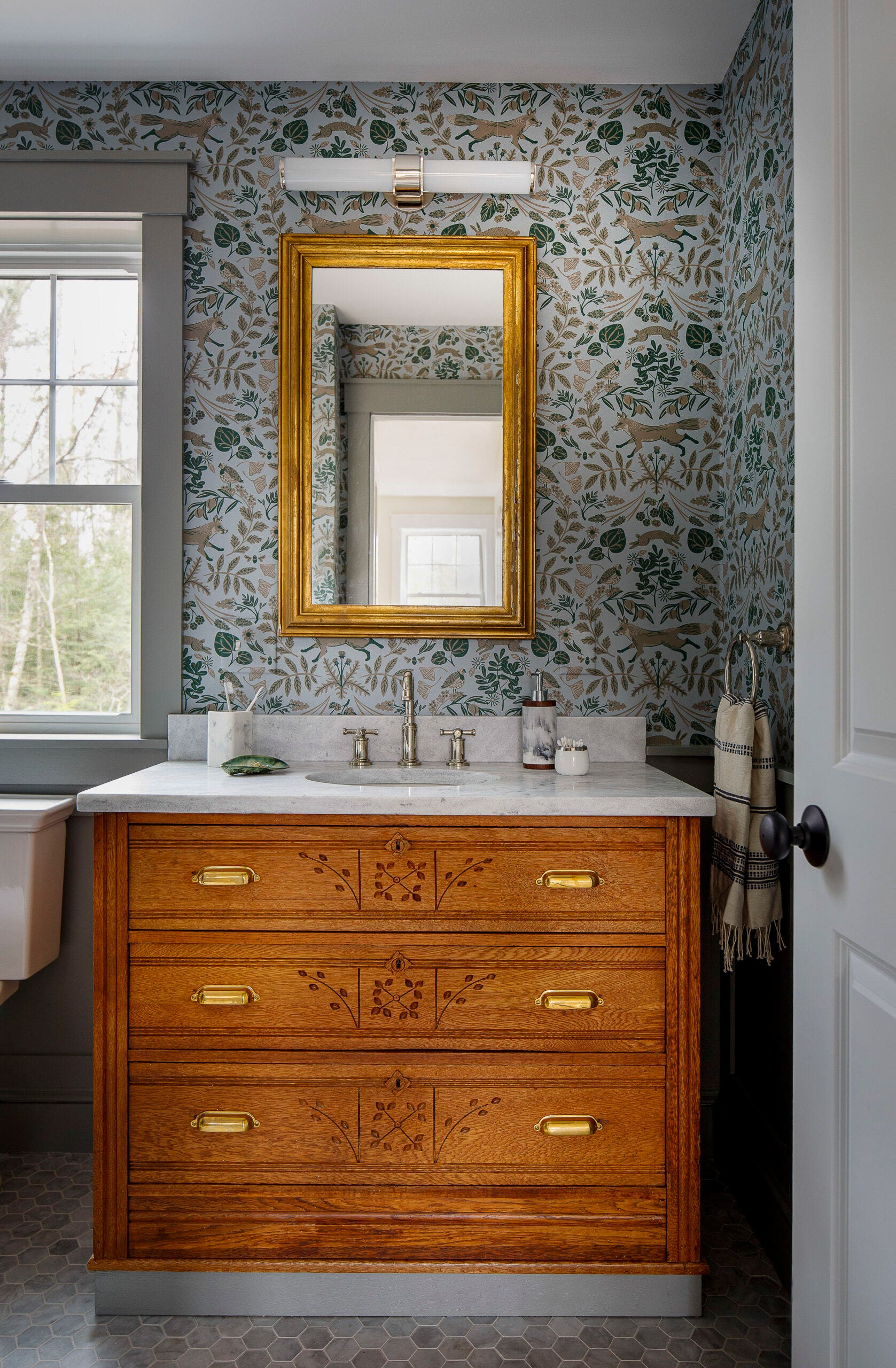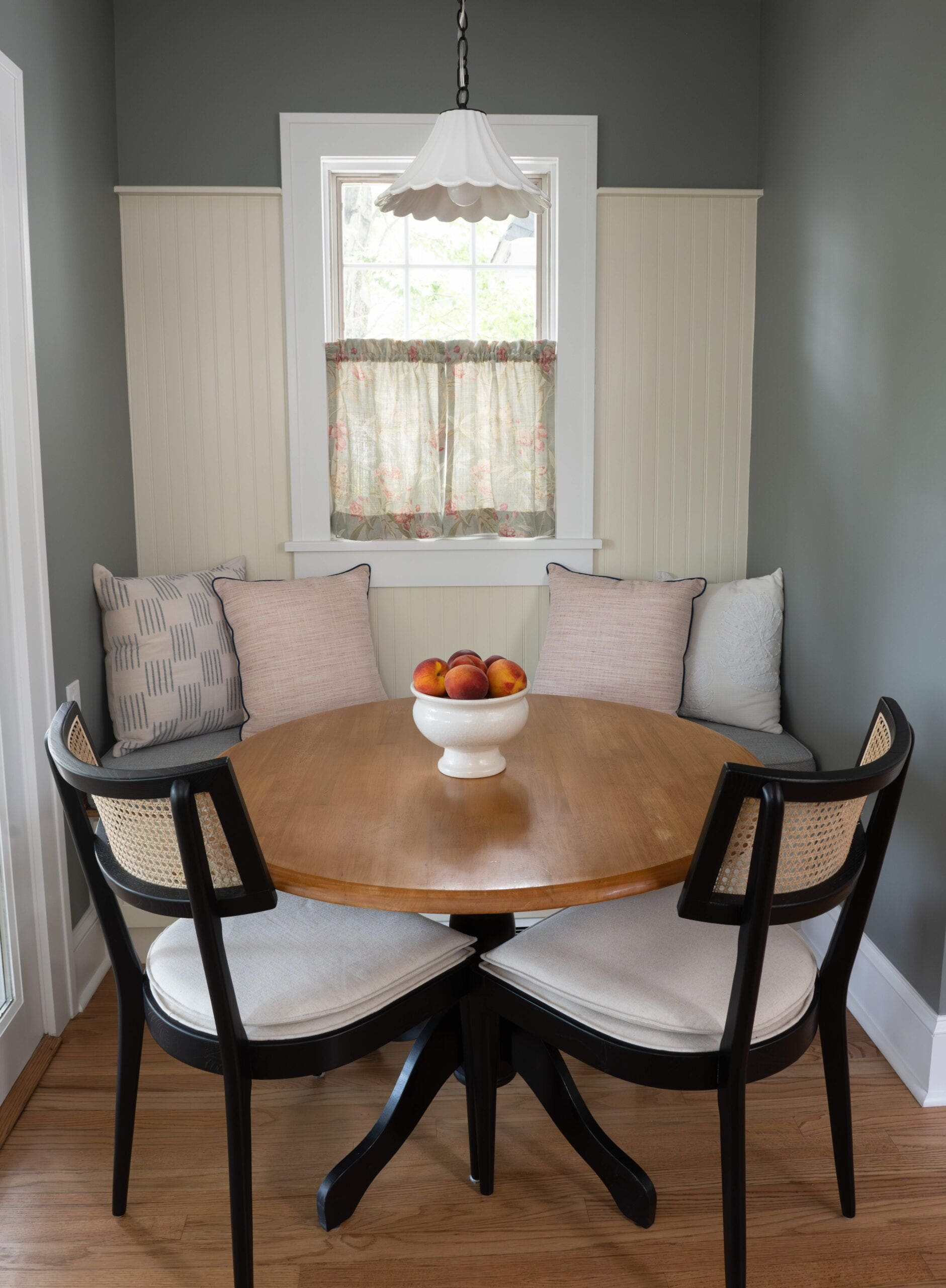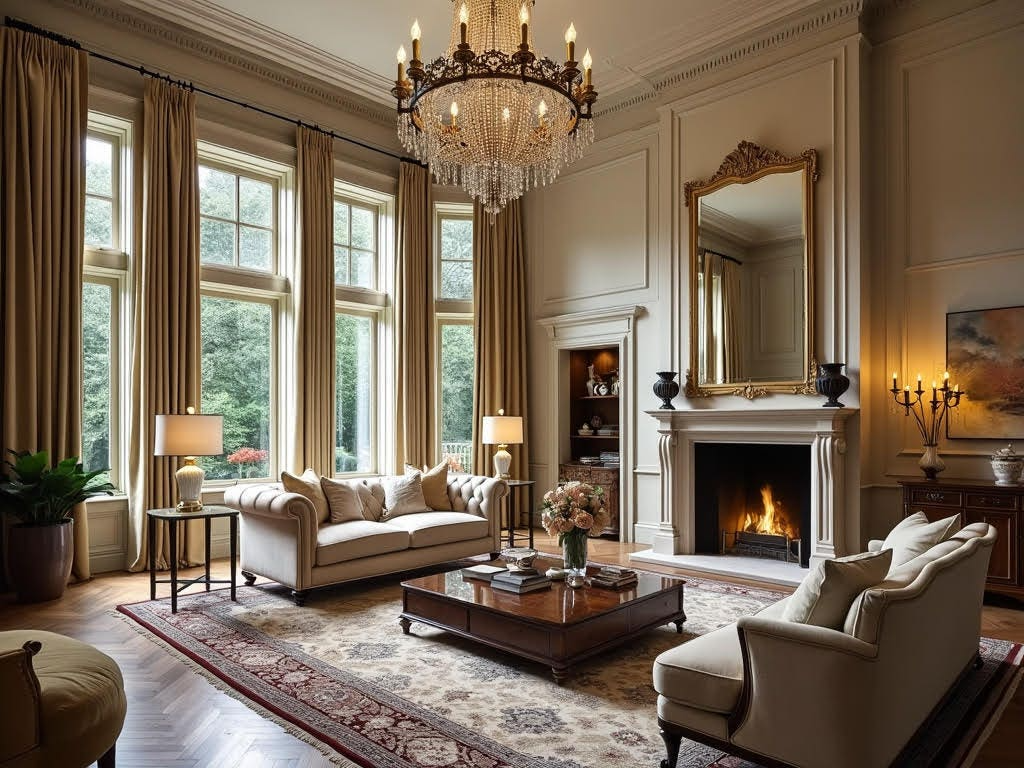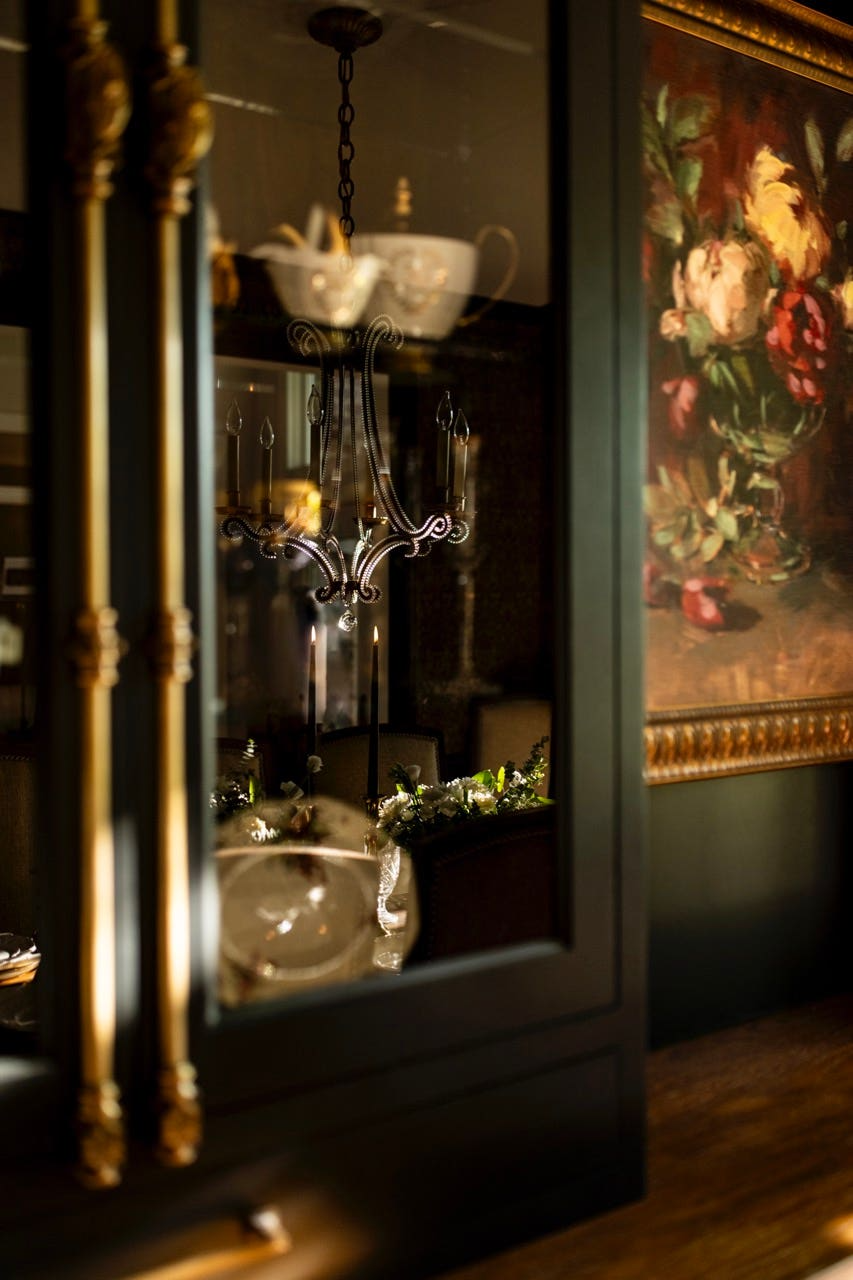
The charm of an old house is undeniable, but whether it’s personal tastes, functionality, or market conditions, you might be living in a modern new build or a house that’s much younger than an old-worldly Victorian or stately Georgian. The good news is, that living in a modern-day dwelling doesn’t mean you have to miss out on the perks of an old home. With the right decorative touches, paint colors and trim work, it’s possible to reinstate that old-home character.
While some homeowners might be looking for ways to make their old homes feel newer, there’s something to be said for appreciating older spaces and commemorating them within modern homes. We spoke with a handful of interior designers and collected several inspiring examples that will help you make a new house feel charming and old.
1. Pull Inspiration From Old Architecture

If your mood board is full of new homes and ultra-modern decor, it’s going to be difficult to add old touches. That’s why Heather Vercellino, founder and principal designer of Verce Design says to look beyond the contemporary and modern. For one particular home she and her team worked on, they “pulled inspiration from European architecture,” which gave this home from the ’90s far more charm.
Take a look at famous structures around the world that have been standing for centuries, or study photos of your favorite buildings and museums with old-world touches to get an idea of what you can incorporate into your own home. There are many different ways to go about it, according to Vercellino. “We focused heavily on designing intricate molding elements like oversized corbels on the fireplace surround, custom wainscoting and highlighting the built-ins with vintage-inspired hardware like cremone bolts and floral cast knobs,” she adds.
2. Repurpose Sentimental Antiques

One thing many homeowners find disappointing about newer builds is the lack of character and stories behind the space. Old homes may be creaky or need a few more repairs every now and then, but they certainly hold fascinating histories. Fortunately, it’s completely possible to imbue a space with your own history and sentimental items from the past. That’s something Sarah Fischer, principal designer and founder of Sarah & Sons Interiors did for this space.
If you have antiques or furniture that’s been passed down, bring it into unexpected rooms for old charm. “We repurposed this hand-carved pine dresser as a vanity, topped with a classic marble counter and paired with our client’s grandmother’s antique mirror, to create a bathroom full of character and meaning,” she says. “After adding this clever-as-a-fox wallpaper—a contemporary design with vintage vibes—this brand-new bath evokes a century of family stories.” While your house itself may not have much to tell just yet, you can absolutely incorporate meaningful touches that will do the job.
3. Try Out Darker Tones and Millwork

Color and architectural elements can completely alter how a house feels inside, no matter its age. And this old charm doesn’t need to spill into other rooms either. You can limit this cozier, older aesthetic to one area of your home, which is something Stephanie Morrison, founder of Local Studio, did within this space.
For this room, Morrison and her team “used a deep, rich, blue hue on the walls and millwork to ground the room” and they also incorporated dark walnut countertops that “play well with this moody color palette.” Darker tones, whether it’s through paint, wood, stone or furniture can bring in feelings that evoke another period or era. In addition, they also brought in “subtle millwork details that don’t exist elsewhere in the house to make this room feel layered, distinct, and just cozy.”
4. Bring Out the Old in Your Kitchen Through Small Details

Look back to kitchen trends over the last 100 years and see what you can pull from popular homes in decades past. It doesn’t necessarily mean your entire cooking space has to look like it came strait from 1950s suburbia, but a few small touches can make a surprisingly large impact without jeopardizing how the space works. No matter the type of home you’re working with, Jennifer Carter, president at Studio Envie, says it’s important to prioritize both function and charm.
There are plenty of creative ways to do this. Start by softening your color palette and choosing a scheme that was common in the era you’re trying to replicate. Bring in textiles, decorative objects and even light fixtures that share this same type of style. Although your home is modern, it’ll reflect pieces of another time period while remaining cohesive.
5. Hone in on Lighting and Wall Coverings

When decorating your space, it’s easy to think about decor and furniture first, but there are more permanent fixtures that play a role in exuding a vintage aesthetic throughout a room. One option that might not be as obvious is wall coverings. Vercellino says “bringing in texture through historic wallpaper is a lovely way to make your home feel old” and recommends her favorite wallpaper designer William Morris, who was an English textile designer from the 1800s. Seek out patterns,designers or companies from the eras you’re interested in for a more authentic take on patterns, colors and finishes.
On top of wallpaper, lighting is another major consideration. Vercellino points out that when old homes were constructed, “can lights and LED lighting were nonexistent,” so it’s best to think about options that feel more realistic for the period. She notes that wall sconces, lamps and chandeliers were far more prevalent. For that warm glow that older homes emulate,, she suggests “adding layered ambient lighting with historic finishes like gilded iron or burnished brass.”
6. Incorporate Molding and Trim Details

You don’t necessarily need to replace all your furniture with antique versions or completely renovate your home to make it feel old. Sometimes subtle structural details can do most of the talking. To help balance an older aesthetic with a newer build, Nicole Bhow Maier, principal interior designer of Threshold Design, recommends bringing in molding and trim work.
“The architectural details in this new construction space are ones you would find in a much older home,” she notes, pointing to the “classical trim moldings, built-in walnut bookcases flanking a bespoke marble fireplace, and chevron-patterned white oak flooring.” In focusing on these decorative structural elements, you can still stay true to your modern tastes while infusing character. By doing so, they’ll provide “a rich backdrop for the more modern furnishings and lighting” and give you a timeless space, according to Bhow Maier.
7. Opt for Timeless Materials

Alla Delion, design director at Studiomint Design Group, makes the very important point that there is a major distinction between an old decorative style that reminds you of your favorite Bridgerton homes and flat-out outdated. “While ‘dated’ interiors reflect passing trends, truly timeless design captures the essence of classical beauty while seamlessly integrating modern functionality,” she explains.
One way to avoid an aesthetic that feels dated is through choosing timeless materials. “Opt for natural, enduring materials like marble and timber for floors and joinery,” she says. “These materials age gracefully and provide a sense of history.” Consider this for furniture, too, by selecting items that are high quality and well crafted so they can stand the test of time. Another helpful tip she offers is to integrate technology in subtler ways, like through hidden speakers and concealed appliances to avoid a look that’s too modern.
8.Display Select Antiques

Antiques are almost a no-brainer when it comes to bringing the character of an old home into a newer one. That being said, there’s a way to do it well that’ll feel authentic rather than cluttered. Vercellino did this by displaying her client’s china “that has been passed down for generations, some of which are over a century old.” She didn’t limit incorporating antiques to a display case either. “We also highlighted collected artifacts from their global travels such as an antique Turkish rug, decor pieces on the built-ins, and artwork on the walls.”
The key is finding a balance by sharing important mementos and collectibles without overdoing it. Delion calls this process “selective antiquing” and notes that rather than stuffing antiques in every corner and square inch of empty shelf space, you instead select a few statement pieces. “A single ornate mirror or a vintage chandelier can add character without overwhelming the room,” she says.